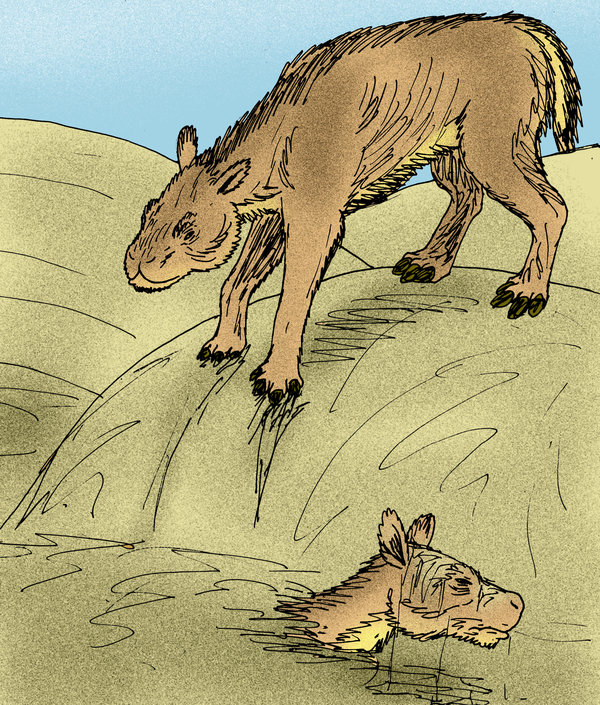- Leptaucheniinae
Taxobox
name = Leptaucheniinae

image_caption = "Leptauchenia decora"
fossil_range = LateOligocene
regnum =Animal ia
phylum =Chordata
classis =Mammal ia
ordo =Artiodactyla
familia = †Merycoidodontidae
subfamilia = †Leptaucheniinae
subdivision_ranks = Genera
subdivision =
*† "Leptauchenia "
*† "Sespia "Leptaucheniinae ("Delicate Necks") was a taxon of small, goat-like
oreodont s with proportionally big heads found throughoutNorth America during the LateOligocene . Because skeletons of "Leptauchenia " and "Sespia " have been found by the literal thousands, they are often quoted as being the most numerous fossil mammals in North America during the Late Oligocene. [ [http://www.sdnhm.org/exhibits/mystery/fg_sespia.html]San Diego Natural History Museum "Fossil Mysteries Field Guide: "Sespia californica"] cite book | author = Prothero, D.R. | year = 2006 | title = After the Dinosaurs: The Age of Mammals | publisher = Indiana University Press | id = ISBN 0253347335] They had high-crowned, hypsodont teeth which were used to chew gritty vegetation.Because the eyes and nostrils were placed high on the head, it was long assumed that "Leptauchenia" and "Sespia" were aquatic, or semi-aquatic animals. However, because their fossils have never been found in floodplain deposits or river channels, and their plague-like abundance in fossil sand dunes,
Donald Prothero suggests that they were desert-dwelling animals. [Prothero, D. R., and F. Sanchez. 2005. Review of the leptauchenine oreodonts (Mammalia: Artiodacttyla). "New Mexico Museum of Natural History and Science Bulletin."] According to Prothero's interpretation, the high-placed eyes and nostrils served to filter out sand while burrowing.References
Wikimedia Foundation. 2010.
